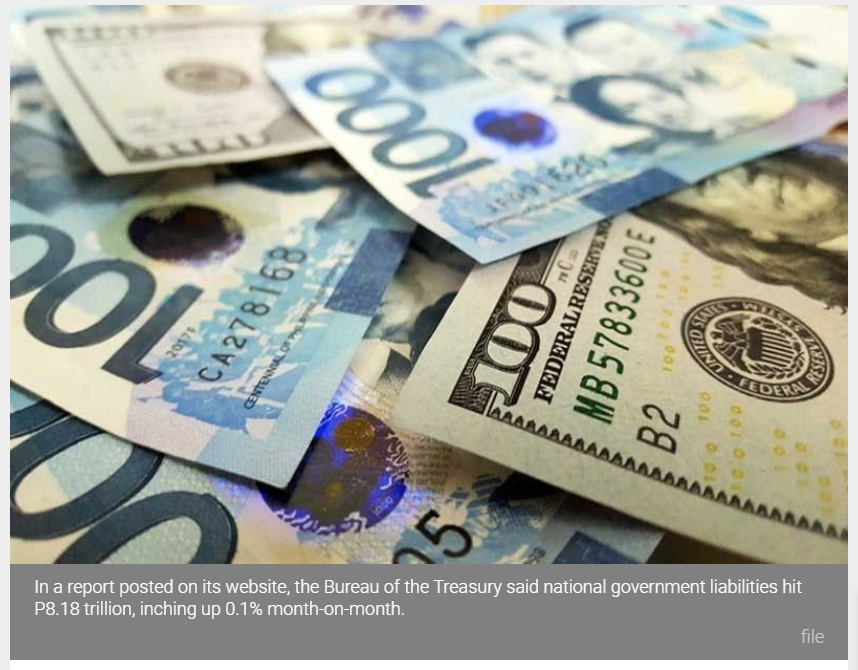Philippines: Government debt inches up in March as fiscal leeway improves
MANILA, Philippines — State debts rose to a fresh record-high on the first quarter, but it also appeared that the government has a wider leeway to borrow more without getting overburdened by liabilities.
In a report posted on its website, the Bureau of the Treasury said national government liabilities hit P8.18 trillion, inching up 0.1% month-on-month.
Since the end of 2019, liabilities already increased by 5.8% in absolute values, and already hit another new record. Broken down, peso liabilities went up 5.2% to P5.52 trillion from end-February, while external debts dipped 1.9% to P2.66 trillion.
But against gross domestic product (GDP), a measure of debt preferred by policymakers, the country’s debt pile appeared to be on a more sustainable level from last year.
From the initial reading of 41.5% debt-to-GDP ratio, the level was revised down to 39.6% last year, which means debt accounted for much lower portion of all economic resources generated last year.
A lower debt ratio means economic resources are rising faster than government debt accumulates, which economic officials consider as an indication of better paying capacity.
The revision was a result of changes on how GDP—the value of all products and services in an economy— is calculated. State statisticians last month rebased GDP to use 2018 prices instead of that in year 2000 to account for changes in value of economic resources, from improvements in cellphone models to better housing.
As it is, the government’s debt pile is only expected to rise in the coming months, especially as the government secures $5.7 billion in loans from multilateral agencies to fund response programs to the coronavirus disease-2019 (COVID-19) outbreak.
On top of that, in April alone, the government also sold P163 billion in Treasury notes, while also borrowing $2.35 billion abroad through the issuance of dollar-denominated global bonds.
But Finance Secretary Carlos Dominguez III earlier said the Duterte administration is ready to incur more debts to counter COVID-19. He estimates that with all debts, the debt ratio will shoot back up to 47%, a still-sustainable level historically.
Data showed that the government’s debt accounted for as much as 71.6% of economic resources in 2004. Globally, a ratio of 50% or less is considered sustainable. In some territories like the European Union, up to 60% is acceptable.
In the Treasury report, domestic debts were pushed by a 1.2% month-on-month rise in government securities to P5.51 trillion.
Meanwhile, external debts were pushed down by the “collective effect” of stronger peso and payments of some obligations.
Source: https://www.philstar.com/business/2020/05/01/2011115/government-debt-inches-march-fiscal-leeway-improves


 Thailand
Thailand




